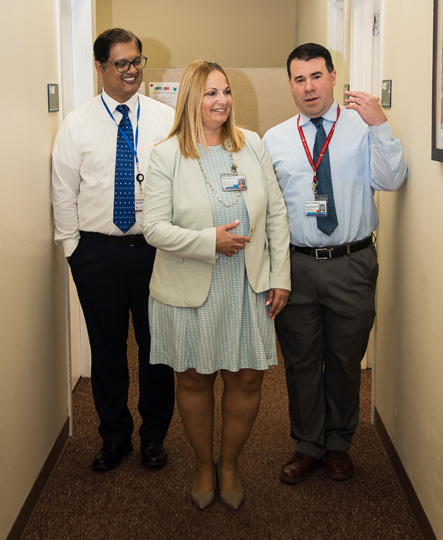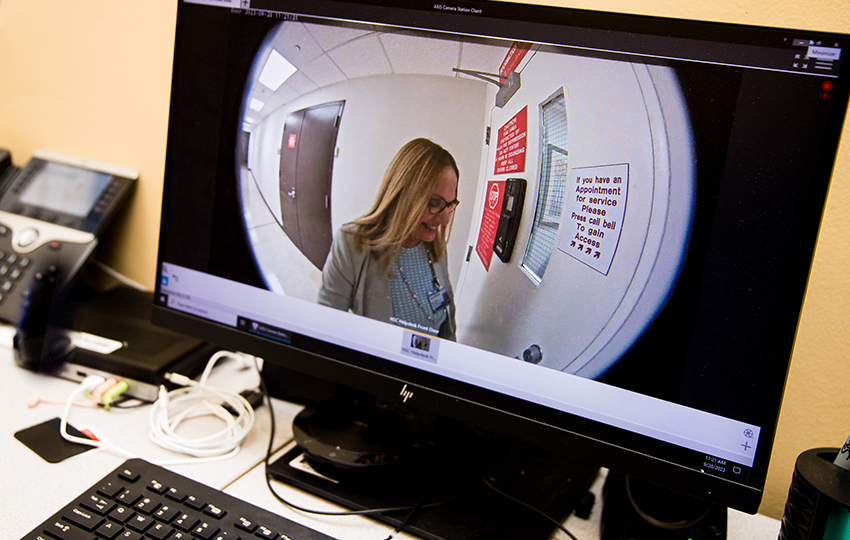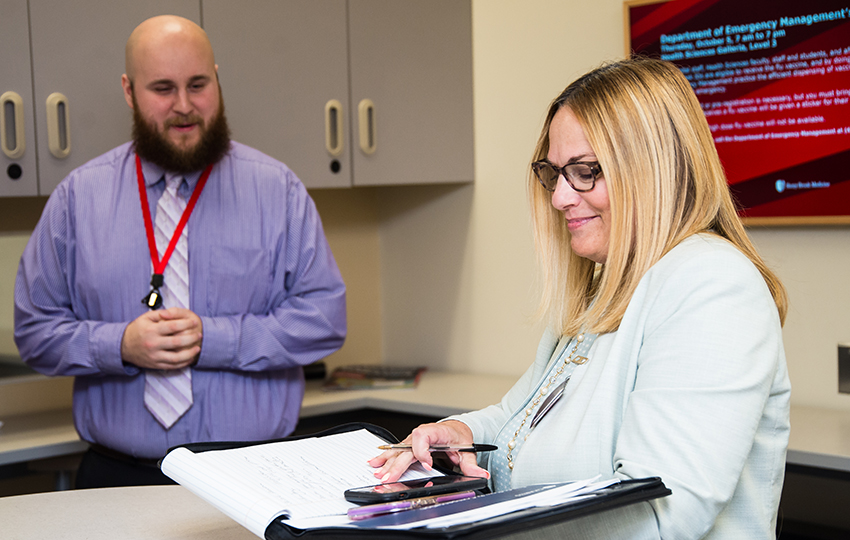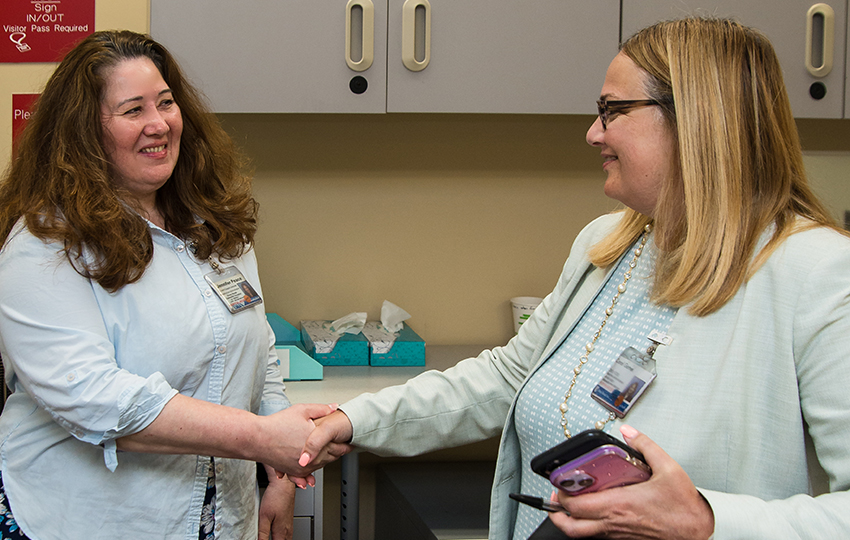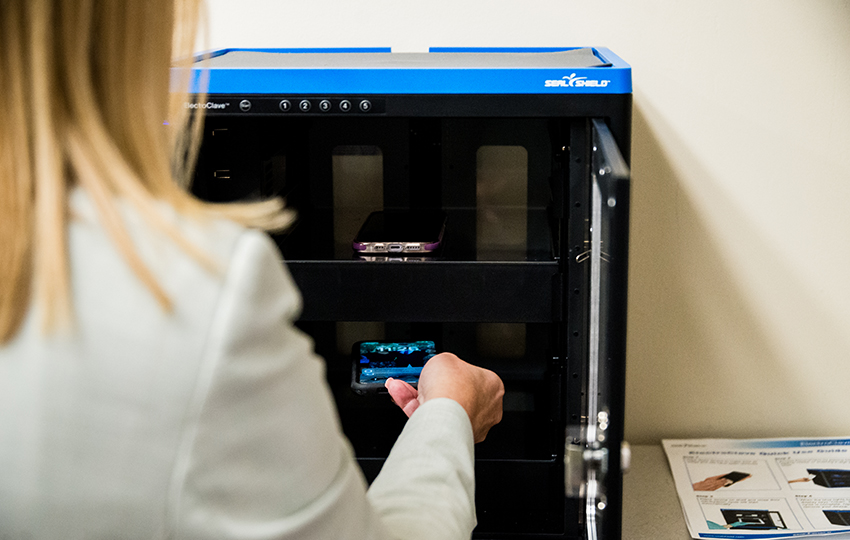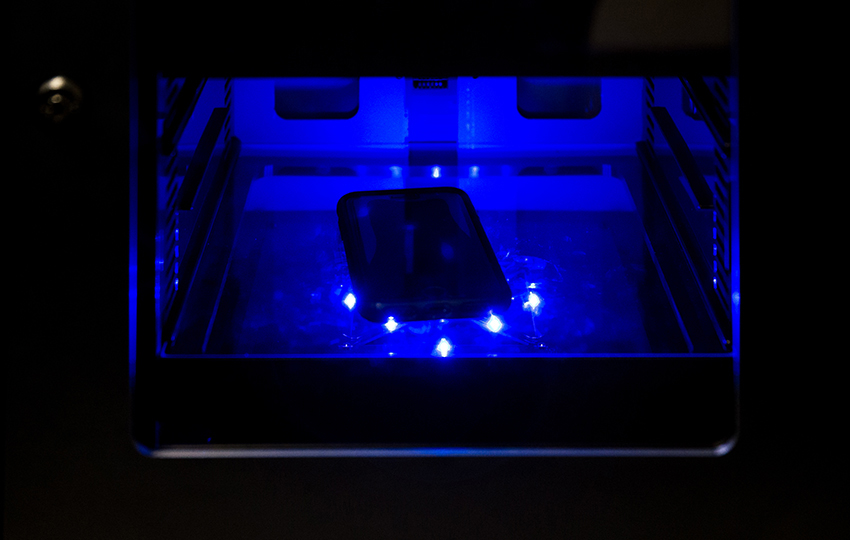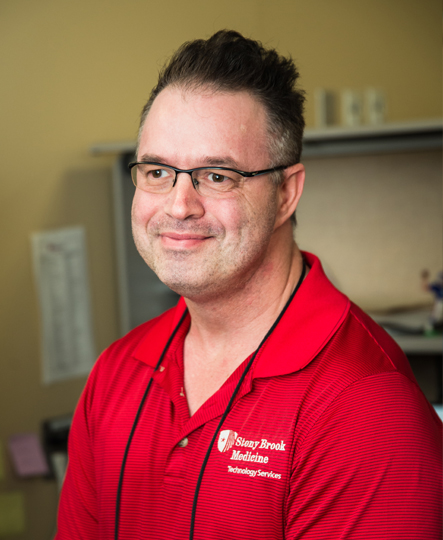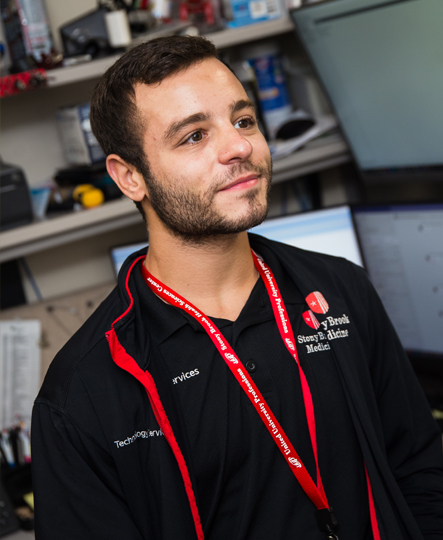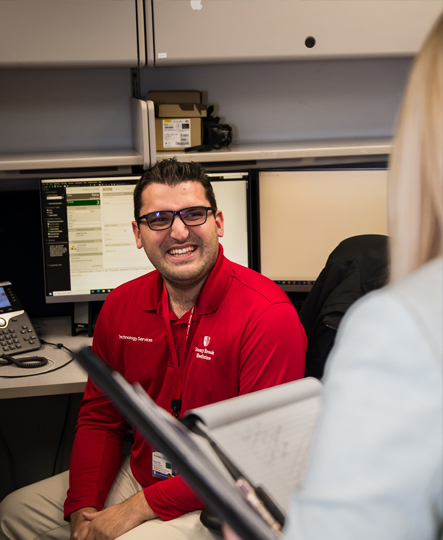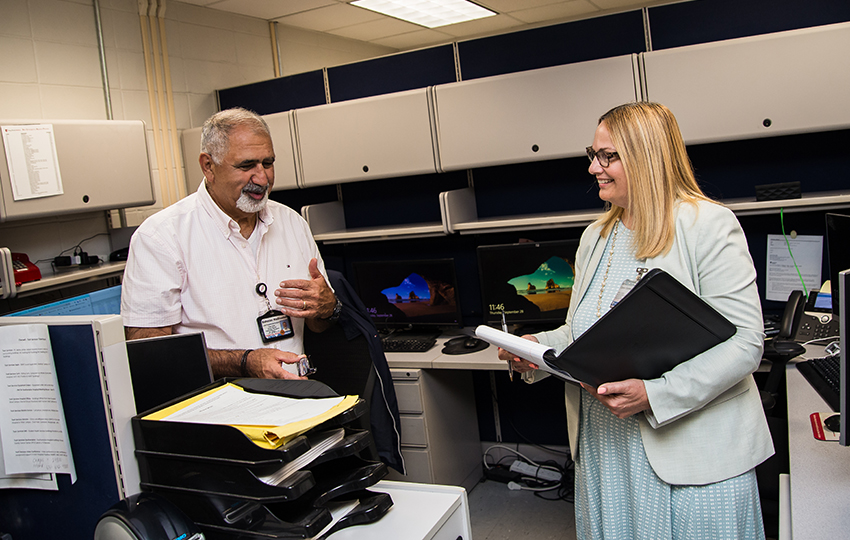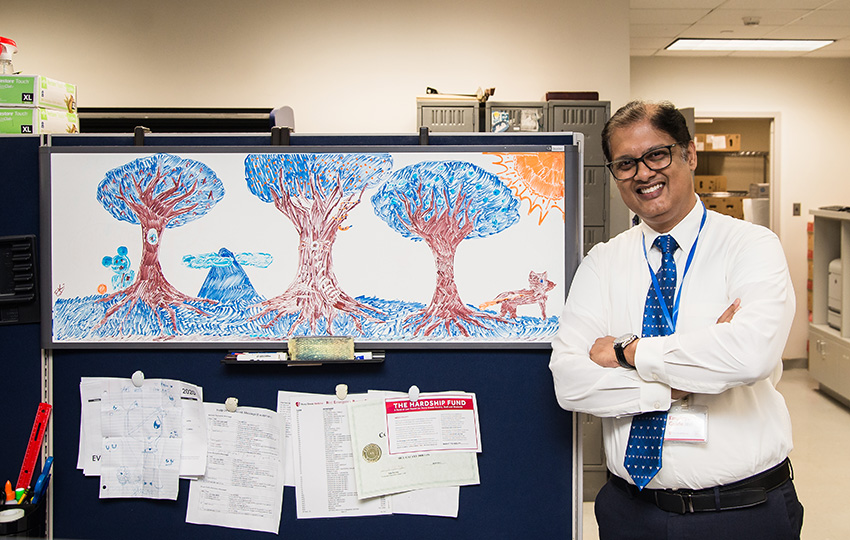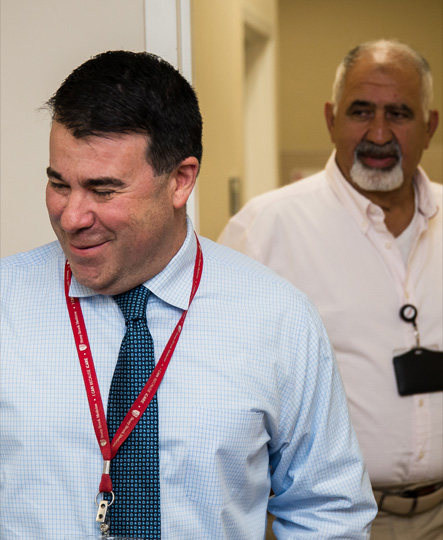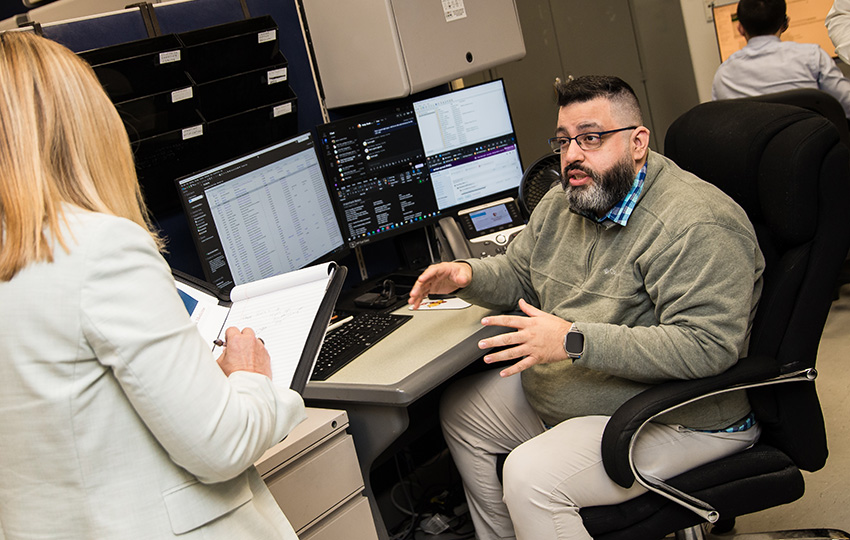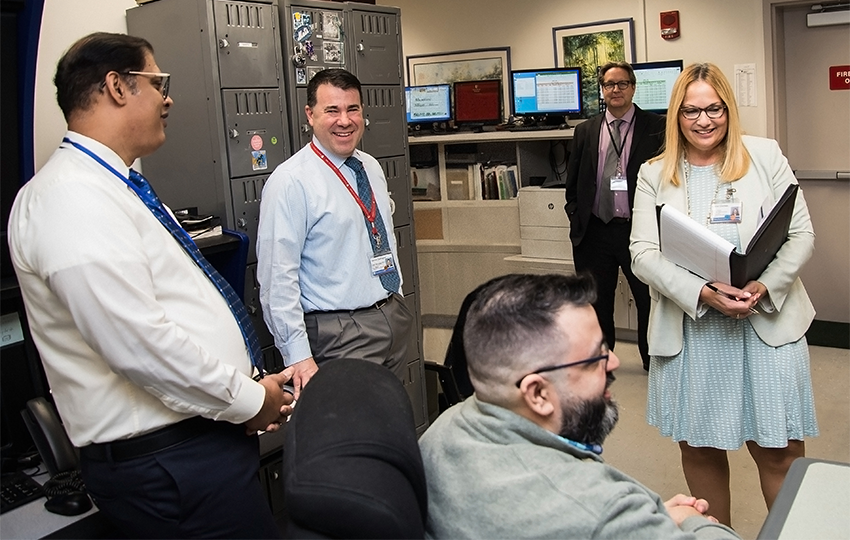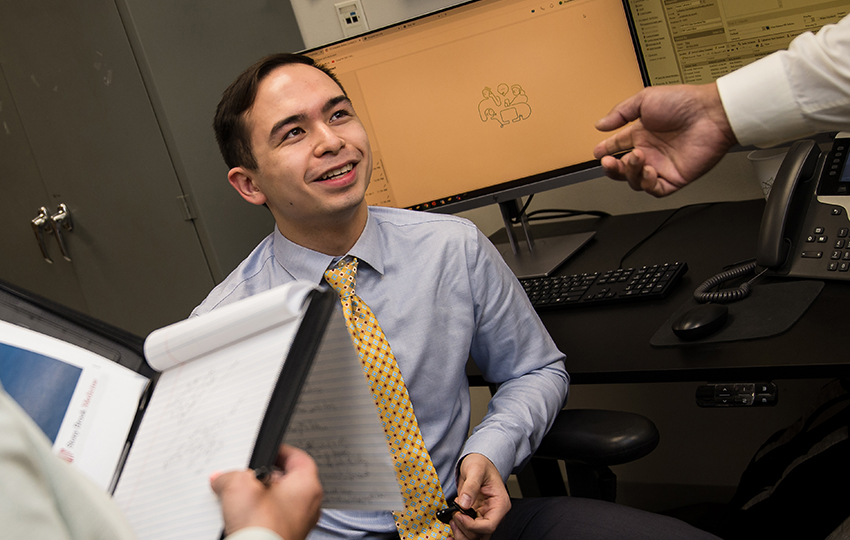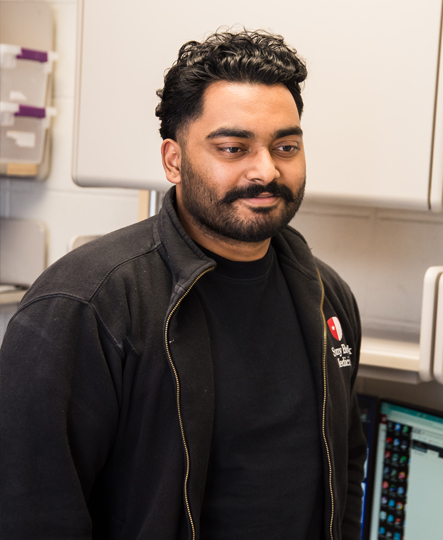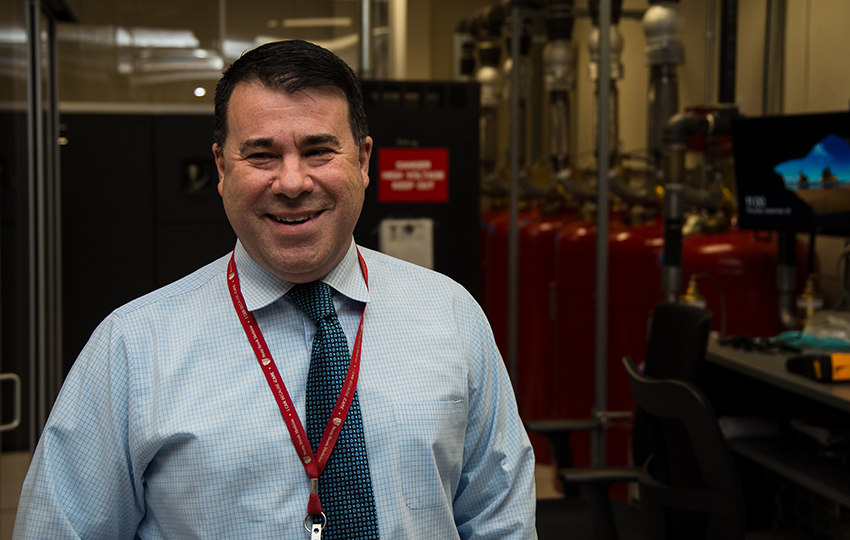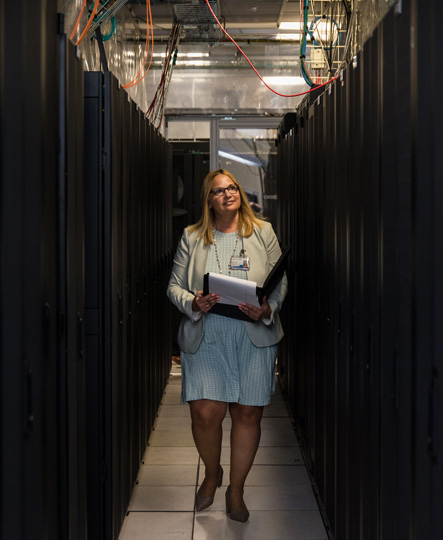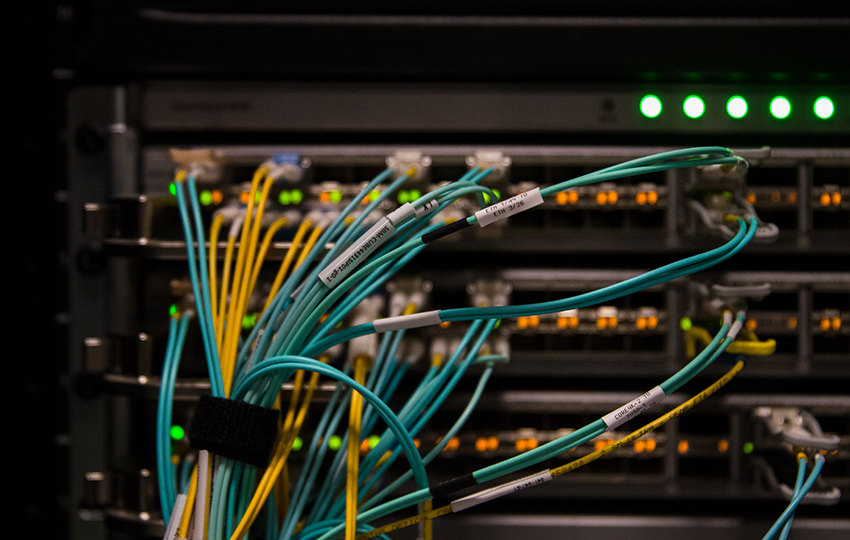John Joy, Mobile Device Coordinator, shared that the team currently services over 4,300 mobile devices, assisting new employees as well as troubleshooting devices that are already in service, as needed. A technical service team is in place to also troubleshoot broken devices and ensure standards are in place to guide the health system toward best practices.
Jacob Kurian, Assistant Director of Customer Engagement and Support, shared the top three types of calls that are received by the Help Desk, which include account-related matters, electronic medical record patient care-related matters and hardware-related issues focusing on personal computers, printers and other types of devices. And as these types of calls deluge the Help Desk, the team is expanding its horizons as increasing integration between information technology and new devices emerge on a regular basis. Most recently, the implementation of interactive television and remote telemetry activities have been added to the list of ongoing new technologies requiring attention.
While many of us as employees focus on the needs met by the Help Desk for our work-related devices to conduct the business of the organization, John DiPalma, Technical Services Engineer, shared his source of pride working in his role for three years to directly support patient care. During the pandemic, he worked with the team to set up the information technology infrastructure to support the forward triage for patients in the Emergency Department, as well as vaccination pods, which required attention to attach services to the network to support data transmissions.
Most recently, the Help Desk expanded services to support Stony Brook Medicine Community Medical Group, the Clinical Management Practice Plan, Stony Brook Eastern Long Island Hospital and Stony Brook Southampton Hospital. These efforts are supported by staff members Justin Joseph, Brendon Davis-Bailey and Vincent Maimone, all of whom enjoy working with customers to support their information technology needs. Justin, Brendon and Vincent enjoy learning and find their jobs rewarding. As information systems continue to integrate across our inpatient and outpatient sites, there will be less disparate systems to manage. In fact, a kick-off meeting was held late last year to initiate the launch to migrate Stony Brook Southampton Hospital onto Stony Brook University Hospital’s Cerner clinical electronic medical record with Stony Brook Eastern Long Island Hospital to follow shortly thereafter.
The Help Desk team also continues to monitor electronic medical record interfaces with the Laboratories, Radiology and other departments to ensure operations are running smoothly. Similarly, Biomedical Engineering relies upon bi-directional data for pumps and other medical devices that integrate within our clinical systems to support optimal function.
Ben Hadizadeh, the Day Shift Supervisor, is a familiar voice on the other end of the phone when calling the Help Desk line. He has been working at Stony Brook University Hospital for 19 years and genuinely enjoys his role on the team. He shared that the hardest part of his job is addressing those who are frustrated when there is an issue that needs to be resolved; however once addressed, the customers often experience a sense of relief and appreciation is expressed.
We often think about clinical staff who stay overnight through inclement weather events, and our IT team is no different as they must provide uninterrupted service to keep the hospital and ambulatory systems in play. While walking through the Help Desk office, I came across a white board with a child’s drawing in one of the cubicles. Jacob Kurian shared that when he was staying overnight during a snowstorm to support the hospital, his daughter Emma was in the office with him for a while and drew the picture over 10 years ago. It is a wonderful memory that remains standing to this day.
Justin Sanin, the Evening Shift Supervisor, started working at Stony Brook in 2021. Prior to that, he left New York to work in San Antonio. Upon his return to New York, he found a home at Stony Brook where he enjoys providing optimal customer service and strives to troubleshoot issues with a quick response using algorithms and developed process steps to support efforts.
The team expressed the importance of resolving issues through a “one-call resolution” motto, when possible. As a result, a call that cannot be resolved by a technician may result in an escalation to another team to support the needs of the customer. The Help Desk team has access to the Quick Reference (QR) guide to support actions to be taken during different circumstances to resolve queries. In addition, the team has been working to provide mechanisms for end-users to access frequently asked questions (FAQs) online through ThePulse at https://inside.stonybrookmedicine.edu/ITRequest so that they have the tools to potentially self-service technological issues.
In addition to focusing on interpersonal interactions to improve client support, the data center underwent significant facility improvement efforts to improve air ventilation to support servers and created a more efficient and effective space.
Hot and cold aisles were implemented in the data center as part of an energy-efficient layout for server racks, network gear and other computing equipment. The goal of a hot/cold aisle configuration is to manage airflow in a way that conserves energy, lowers cooling costs and increases the lifespan of cooling units. The hot aisle/cold aisle design involves lining up server racks in alternating rows with cold air intakes facing one way, and hot air exhausts facing the other. A containment system isolates hot aisles and cold aisles from each other and prevents hot and cold air from mixing.

Since the Help Desk staff interacts with a multitude of customers, training is a primary focus to ensure the best experience possible. From on-duty training to customer service LinkedIn modules, as well as tailored Help Desk training, the team is regularly exposed to best practices to optimize customer experiences.
Jacob Kurian shared that many staff working at Stony Brook University Hospital feel like they “hit the lottery” by working in this environment. The team feels extraordinary support from one another. He stated that the staff working in the department feels like family, which is the glue that retains team members within their roles.
Brandon Wan, one of the more recent hires in the department, recently graduated from Stony Brook University and genuinely enjoys his new job with the Help Desk team. He shared that he takes pride in knowing that his role is valued as it is critical to address information systems that support patient care in a timely manner. Transitioning from the academic environment to a real-world scenario has been eye-opening and extremely rewarding.
Other staff members recently joining the Help Desk team include Justin Joseph, who started working at Stony Brook in 2020 as a Programmer Analyst and Justin Sanin, the Evening Shift Supervisor, who started in 2021.
Interacting with the Help Desk team was a pleasant and eye-opening experience. The staff work together as a tight-knit team to deliver the services needed to keep the health system functioning optimally. The team repeatedly mentioned how the strong communication between staff members offers a higher level of service to ensure issue resolution in a timely manner. So, the next time you dial 4-HELP seeking IT support, you will have more insight into the important work this team accomplishes on a daily basis to keep our devices and clinical data operations fully functional.
Carol Gomes, MS, FACHE, CPHQ
Chief Executive Officer
Stony Brook University Hospital


